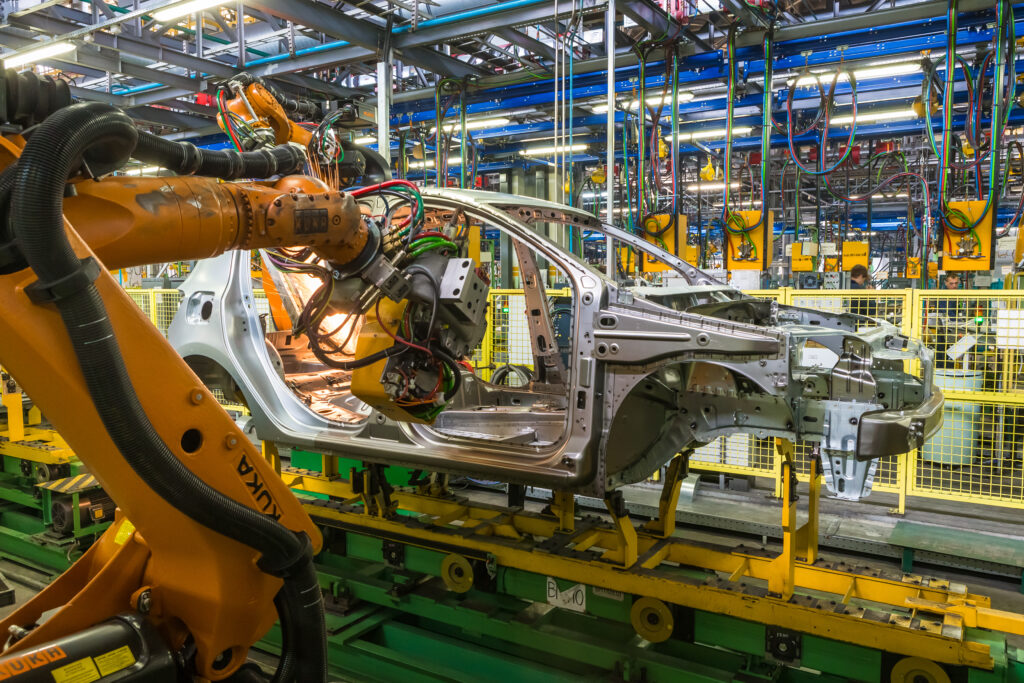24.06.2021
Smart Factory Challenge: RTLS in Industry 4.0

Smart Factory? Digital Twin? Industry 4.0? IoT? Digital manufacturing? All of these terms are encountered when dealing with the future of (manufacturing) industry. But what exactly do these terms mean, what role does RTLS play, and how can medium-sized companies in particular profitably use the digitalization of processes in industry?
What is a Smart Factory?
Smart Factory means something like “intelligent factory”. The smart factory can be understood as a production environment that ideally organizes itself completely through intelligent networking.
For the concept to work, machines and products must be networked with each other so that wireless communication, for example via Bluetooth or RFID, can take place between products and systems. The result is fully automated, lean manufacturing processes based on the pull principle. With networking beyond the plant boundaries, the entire value chain from raw material to customer can thus be covered.
In Industry 4.0, which is characterized by process digitization, artificial intelligence and digital twins, employees primarily take on the task of monitoring and optimizing as well as organizing to external interfaces.
New opportunities in Industry 4.0 for companies from the manufacturing sector
Digitization has been taking hold in most companies since the third industrial revolution. Analog work shifted to computer work and manufacturing has moved toward automation.
For most companies from the manufacturing industry or warehouse logistics, the advantages of networked Industry 4.0 lie in particular in the area of asset management, or the monitoring of the entire production chain. Asset tracking is no longer a foreign concept for the manufacturing industry. Thanks to the possibilities of Industry 4.0, however, real-time location systems (RTLS) can provide even more precise and reliable location information on tools, goods or equipment. This takes supply chain optimization and asset management to a new level.
RTLS and Smart Factory
Favendo’s RTLS system gives companies a complete overview of mobile assets, their usage and utilization at all times, as well as a real-time insight into the entire process chain. Any problems that arise can be located and checked immediately, thefts are prevented and long search times are reduced.
The data obtained from the RTLS system can also be used to optimize processes. Workers, for example, can be tracked to increase their safety. While mobile inventory is found quickly thanks to Favendo’s RTLS and delays due to search times decrease. Above all, tracking industrial trucks provides an overview of utilization and routes within production lines. This reveals inefficient processes, but also bottlenecks, and allows conclusions to be drawn about bad investments. RTLS thus help to optimize the production process and reduce costs in the long term.
But how are RTLS systems and the smart factory connected? RTLS makes it possible to track exactly which object is where at any given time. In other words, the physical world can be completely transformed into a digital model. A digital twin of the entire manufacturing environment is created, which can control maintenance processes automatically, for example.